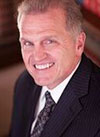
Before Jan. 1, 2020, death benefits payable from an individual retirement, 401(k), profit-sharing, or 403(b) account (hereinafter qualified retirement accounts or QRAs) could be paid in installments to the designated beneficiary, with the minimum amount of each installment tied to the designated beneficiary’s life expectancy. Furthermore, if a qualifying trust was named as the beneficiary, death benefits could be “stretched out” over the life expectancy of the oldest in age trust beneficiary.
The Setting Every Community Up for Retirement Enhancement Act of 2019 (the SECURE Act),1 which took effect on Jan. 1, 2020, changed all that. Subject to some exceptions, the SECURE Act requires that a QRA account be distributed in its entirety within 10 years after the account owner’s death (either periodically or as a lump sum no later than in year 10).
Not all rules governing distributions from a QRA have changed. For example, as was the case before the adoption of the SECURE Act, death benefits must be distributed within five years after the year following the date of the account owner’s death when the account owner’s estate or a nonqualified trust is named as the beneficiary.
Not all changes made by the SECURE Act are negative from a taxpayer’s point of view. Here is some of the good news:
-
Previously, contributions to traditional individual retirement accounts (IRAs) were prohibited after the account owner turned age 70½. Beginning in 2020, anyone with earned income may contribute to a traditional IRA.2
-
Under prior law, QRA owners were required to begin receiving annual distributions (required minimum distributions or RMDs) from their account the year following the year in which the account owner turned age 70½ (the “required beginning date”). The SECURE Act delays the required beginning date to age 72.3
-
The SECURE Act allows a QRA owner to withdraw up to $5,000 without penalty upon the birth or adoption of a child.4
-
The SECURE Act allows part-time employees age 21 or older to participate in QRAs, if they have either 1) worked at least 1,000 hours the prior year or 2) worked at least 500 hours per year for three consecutive years.5
-
The SECURE Act allows 529 plans (tax-advantaged education savings accounts) to pay up to $10,000 of qualified student loans.6
Recommendations
In many cases, the SECURE Act has made existing planning for QRA death benefits obsolete. Here are recommendations that could help lawyers and their clients maximize the benefits associated with QRAs going forward.
 Andrew J. Willms, Miami 1984, LL.M 1985, is of counsel to Willms-O’Leary S.C., Thiensville. He is a fellow of the American College of Trust and Estate Counsel and focuses his practice on estate planning, charitable giving, business law, and taxation law. He is also the president and CEO of The Milwaukee Company, an Independent Registered Investment Advisory firm. He is registered as an investment advisor representative and holds degrees in international economics and business administration.
Andrew J. Willms, Miami 1984, LL.M 1985, is of counsel to Willms-O’Leary S.C., Thiensville. He is a fellow of the American College of Trust and Estate Counsel and focuses his practice on estate planning, charitable giving, business law, and taxation law. He is also the president and CEO of The Milwaukee Company, an Independent Registered Investment Advisory firm. He is registered as an investment advisor representative and holds degrees in international economics and business administration.
 Maureen L. O’Leary, Marquette 2008, is the president of Willms-O’Leary S.C., Thiensville. She focuses on estate planning, estate and trust administration, business law, and taxation law. She is a member of the Milwaukee Estate Planning Forum and a director of the State Bar of Wisconsin’s Business Law Section.
Maureen L. O’Leary, Marquette 2008, is the president of Willms-O’Leary S.C., Thiensville. She focuses on estate planning, estate and trust administration, business law, and taxation law. She is a member of the Milwaukee Estate Planning Forum and a director of the State Bar of Wisconsin’s Business Law Section.
Review Beneficiary Designations. Now that the tax benefits of stretching out a QRA after death have been greatly curtailed, it might be vital to update QRA beneficiary designations.
For example, it might make sense to name a qualified charity as the beneficiary of a QRA. In that case, the money that remains in the QRA upon the account owners’ death will never be taxed because of the charitable deductions for income and estate taxes.
It might also be beneficial to name grandchildren as the beneficiaries of a QRA when the account owner’s children are financially secure and taxed at higher rates, to take advantage of the grandchildren’s lower tax rates and to avoid potentially subjecting the benefits to estate taxes when the children die.
Favor Eligible Designated Beneficiaries. The SECURE Act’s 10-year accelerated distribution rules do not apply to “eligible designated beneficiaries”: 1) the surviving spouse of the deceased account owner, 2) a minor child of the deceased account owner, 3) a beneficiary with a disability, 4) a chronically ill individual, or 5) a beneficiary who is no more than 10 years younger than the deceased account owner.7 It might make sense to favor eligible designated beneficiaries as the beneficiaries of QRAs and perhaps bequeath non-QRA assets to ineligible persons.
Establish a Roth QRA. A Roth QRA is a special type of QRA that is funded with after-tax contributions. Anyone with earned income may establish a Roth IRA, and employers may sponsor Roth 401(k)s for their employees. While contributions to a Roth QRA are taxable, distributions from a Roth QRA (whether to the account holder or the designated beneficiary) are not. In other words, while tax on the earnings of a traditional QRA are deferred until those earnings are distributed, the income earned on a Roth QRA’s investments is never taxed.
Consider a Roth Conversion. An existing traditional QRA can be converted to a Roth QRA. The amount converted is subject to income taxation in the year of conversion. A client may want to engage in a Roth conversion if the client believes income tax rates will increase in the future. (Income tax rates are currently scheduled to increase in 2026 when many rate cuts made by the Tax Cuts and Jobs Act expire.)
Roth QRAs can be especially beneficial when 1) the client has assets outside of the money being rolled into the Roth available to pay the tax triggered by the conversion, 2) the client has a long life expectancy, 3) the client does not need to receive distributions from the QRA for his or her support, and 4) the client’s beneficiaries are likely to keep the money in the QRA for some time after the client’s death.
Partial Roth conversions also are permitted. Converting to a Roth QRA gradually over several years (a “staged Roth conversion”) can help a client avoid being pushed into higher tax brackets in the conversion years.
Reconsider the QRA’s Investments. Given that taxes on investment earnings held in a QRA are either deferred (in the case of a traditional QRA) or avoided altogether (in the case of a Roth QRA), typically it is best to have securities that would otherwise generate the most taxable income allocated to a QRA. Further, as a general rule, because the income-tax basis of assets held outside a QRA are adjusted to their fair market value when the owner dies, it can be best to have faster growing assets outside the QRA. In other words, investors should consider holding stocks in non-QRAs and taxable bonds in QRAs.
Consider Making Qualified Charitable Distributions. A qualified charitable distribution (QCD) is a direct distribution of funds from an IRA whose owner has attained age 70½ to a qualified charity. QCDs have two major tax benefits that are hard to beat: 1) QCDs are not taxable, and 2) QCDs are considered to be RMDs.8 In the past, a major drawback to making QCDs was the opportunity cost of not being able to stretch out the donated funds. By shortening the potential stretch-out period, the SECURE Act lessens that cost.
Also of Interest
SECURE Act: What Every Trusts & Estates Lawyer Needs to Know
Webcast seminars: May 11 & May 22, 12 – 12:50 p.m.
Overview: The Setting Every Community Up for Retirement Enhancement (SECURE) Act made many significant changes that affect saving for retirement and the timing of distributions. Review what has changed, who it affects, and what actions your clients may want to take in light of the changes including:
- Key provisions that will impact your clients’ estate plans.
- The increase in age for required minimum distributions (RMDs).
- The removal of age limits for contributions to traditional IRAs.
- Partial elimination of the “stretch” IRA option.
- Why clients’ beneficiary designations might need to be changed.
SECURE Act: What Every Trusts & Estates Lawyer Needs To Know 2020, 1.0 CLE, presented by State Bar of Wisconsin PINNACLE®. Webcast seminar, also available through OnDemand. Register; www.wisbar.org/CA3010.
Drafting Tips for Trusts
Lawyers who assist clients with retirement and estate planning by creating trusts should be aware of the following effects of the SECURE Act.
“See-Through Trusts” Still Are Useful. For many years, estate planning attorneys have included retirement-benefits savings clauses in trust agreements in an effort to ensure that trusts receiving QRA distributions were qualified QRA beneficiaries (“see-through trusts”). This was essential because if a trust was considered a see-through trust, then QRA distributions to the trust could be annuitized over the life expectancy of the oldest trust beneficiary. If not, then the QRA had to be completely distributed within five years after the account owners’ death.
In general, a see-through trust must be valid under state law, be irrevocable no later than the QRA owners’ death, and have identifiable trust beneficiaries who are all individuals (not estates, charities, and so on), and a copy of the trust documentation must be provided to the QRA custodian by October 31 of the year following the QRA owners’ death.
The SECURE Act has greatly curtailed the ability to stretch QRA distributions over a trust beneficiary’s life expectancy, and only trusts that are see-through trusts qualify to stretch distributions 10 years after the account owner’s death. If a trust beneficiary is not a see-through trust, the old five-year rule is still in effect.
Beware of Conduit Trust Provisions. The so-called conduit trust was a very popular type of see-through trust. Conduit trusts satisfied the requirement that all beneficiaries be readily identifiable by providing that all RMDs paid to the trust be further distributed from the trust to the trust beneficiary during that same year.
An obvious drawback to a conduit trust is that retirement benefits could end up in the hands of a “spendthrift” individual or become attachable by the beneficiary’s creditors after they have been distributed. This was less of a problem before passage of the SECURE Act, because the amount that was required to be distributed every year was relatively small. That may no longer be the case, now that the entire death benefit must be paid within 10 years.
For example, before passage of the SECURE Act, if a $4 million IRA was payable to a conduit trust whose beneficiary had a 40-year life expectancy, the lifetime stretch payout rules allowed the death benefit to be annuitized over 40 years. Now, the entire $4 million (plus earnings) must be distributed in only 10 years.
The Accumulation Trust Solution. For many clients, the accumulation trust is a better type of see-through trust. Accumulation trusts give the trustee the discretion to accumulate or distribute RMDs paid to the trust. RMDs that are distributed will no longer be protected from creditors. Accumulation trusts satisfy the requirement that all beneficiaries of a see-through trust be identifiable by including limitations on the permissible appointees of powers of appointment, narrowly defining heirs at law, prohibiting distributions to the settlor’s estate, and the like.
A significant drawback to an accumulation trust is if the RMD is not distributed, the trust must report the RMD as taxable income, and trusts can be taxed at much higher rates than individuals. Of course, income tax issues are not a concern for trusts that are beneficiaries of Roth QRAs, because distributions from Roth QRAs are tax free. This is one reason why the SECURE Act has created a lot of buzz about the benefits of Roth QRAs and Roth conversions.
Consider a Section 678 Trust. A Section 678 Trust is a trust whose taxable income is taxed at the beneficiary’s income tax rates regardless of whether it is distributed to the beneficiary. There are different ways Section 678 status can be triggered. One of the most common is to give the beneficiary the right (but not a requirement) to withdraw all income. However, giving a beneficiary the right to withdraw trust income can expose that income to misuse by the beneficiary and to creditor claims.
Separate Share Provisions No Longer Are Necessary. Before the SECURE Act, RMDs to see-through trusts could be distributed over the life expectancy of the oldest trust beneficiary, or over the life expectancy of each trust beneficiary if “separate share” provisions were included. Now, see-through trusts qualify for a maximum 10-year stretch regardless of the oldest beneficiary’s life expectancy. As a result, it is no longer necessary to include separate share provisions.
Summary
-
The passage of the SECURE Act has resulted in major changes to tax rules governing contributions to, and required withdrawals from, qualified retirement plans and IRA accounts.
-
In many cases, the SECURE Act makes existing estate planning for retirement benefits obsolete.
-
While some of the SECURE Act’s provisions will significantly accelerate taxes on retirement assets, there are also some taxpayer friendly changes.
Conclusion
It is yet to be seen to what extent the SECURE Act lives up to its name. However, one thing seems clear: Absent careful planning, distributions from QRAs are likely to be taxed more heavily and be more vulnerable to creditors than they were under prior law.
Meet Our Contributors
What do you like to do when you are away from the office?
 Being a lifelong “gear head,” most of my hobbies center around motorsports. I collect classic muscle cars, am an avid motorcyclist, and race vintage sports cars. I live just 45 minutes from the Road America race course, which I believe to be the finest road course in the United States. (If you’ve never attended the Hawk Race and Concours d ‘Elegance, I highly recommend you do so. It’s a world-class event.) I recently sold my race car and am in the market for a replacement, so let me know if you are aware of one that’s for sale!
Being a lifelong “gear head,” most of my hobbies center around motorsports. I collect classic muscle cars, am an avid motorcyclist, and race vintage sports cars. I live just 45 minutes from the Road America race course, which I believe to be the finest road course in the United States. (If you’ve never attended the Hawk Race and Concours d ‘Elegance, I highly recommend you do so. It’s a world-class event.) I recently sold my race car and am in the market for a replacement, so let me know if you are aware of one that’s for sale!
Andrew J. Willms, Willms-O’Leary S.C., Thiensville.
Where or when do you get your best ideas?
 I get my best ideas when I’m brainstorming with my team. I am constantly bouncing ideas off my colleagues and my husband (who is also a lawyer). Once I have an idea started, I know that if I flesh it out through a lively discussion, we will end up with an even better idea when we’re done.
I get my best ideas when I’m brainstorming with my team. I am constantly bouncing ideas off my colleagues and my husband (who is also a lawyer). Once I have an idea started, I know that if I flesh it out through a lively discussion, we will end up with an even better idea when we’re done.
Our brainstorm sessions have two rules. First, think really big and imagine what could be if there were no limits. Second, play devil’s advocate and test the idea from all sides. Somewhere between these two points is a great idea waiting to emerge. My team knows I operate this way and can see me coming from a mile away for an impromptu brainstorm session! Or, if we don’t have time to discuss it that moment, we jot the idea down and schedule a time to discuss it later.
Maureen L. O’Leary, Willms-O’Leary S.C., Thiensville.
Become a contributor! Are you working on an interesting case? Have a practice tip to share? There are several ways to contribute to Wisconsin Lawyer. To discuss a topic idea, contact Managing Editor Karlé Lester at (800) 444-9404, ext. 6127, or email klester@wisbar.org. Check out our writing and submission guidelines.
Endnotes
1 The Setting Every Community Up for Retirement Enhancement Act (hereinafter SECURE Act) was enacted as part of the Further Consolidated Appropriations Act, 2020, Pub. L. No. 116-94, 133 Stat. 2534 (Dec. 20, 2019).
2 SECURE Act, § 107(a).
3 SECURE Act, § 114(a).
4 SECURE Act, § 113(a).
5 SECURE Act, § 112(a).
6 SECURE Act, § 302(b).
7 SECURE Act, § 401(a)(2)(ii).
8 Another advantage is that a QCD is not an itemized deduction. As a result, the IRA owner who uses a QCD for charitable giving can still take advantage of the new, higher, standard deduction.
